Discover essential strategies in this guide to SEO for Orlando small businesses to enhance local search rankings, attract targeted traffic, and grow your online presence.
Table of Contents
Understanding the Orlando Market
As a small business owner in Orlando, gaining a comprehensive understanding of the local market is crucial for tailoring your SEO and marketing strategies effectively. This section provides key insights into the demographics, key industries, and consumer behavior in Orlando, helping you better align your online presence with the needs and preferences of your target audience.
Demographics
Orlando is experiencing rapid population growth, adding over 1,000 new residents each week, a trend that has been consistent for the past 60 years. The city’s population is now over 2.5 million, making it one of the fastest-growing metro areas in the United States. This growth is fueled by both domestic and international migration, with a significant portion of new residents being young, highly educated, and diverse. The median age in Orlando is approximately 34.7 years, indicating a relatively young population compared to other parts of Florida (Orlando Business Alliance) (News).
Orlando Population Growth (1960-2024)
Steady population growth in Orlando from 1960 to 2024, showcasing significant demographic expansion.
Demographic Breakdown Of Orlando (2024)
Pie chart displaying the racial and ethnic composition of Orlando’s population in 2024.
Age Distribution In Orlando (2024)
Bar chart illustrating the age distribution of Orlando residents in 2024.
Key Industries
Orlando’s economy is diverse, encompassing several key sectors that drive its growth and innovation. Major industries include tourism, entertainment, advanced manufacturing, aerospace and defense, life sciences, and healthcare. The region is also becoming a hub for innovative technologies, such as autonomous vehicles, entertainment technology, gaming, and fintech. These industries not only provide employment opportunities but also attract skilled professionals to the area (Orlando Business Alliance) (Orlando Business Alliance).
Key Industries Employment In Orlando (2024)
Bar chart highlighting employment distribution across Orlando’s major industries in 2024.
Consumer Behavior
Understanding the local consumer behavior is vital for businesses looking to succeed in Orlando. The city’s residents are known for their high levels of engagement with local businesses and their strong presence on social media platforms. The population is also characterized by a high level of educational attainment, with a significant portion holding bachelor’s and graduate degrees. This educated demographic tends to be more discerning and values high-quality, relevant content, which should be reflected in your marketing and SEO strategies (Orlando Business Alliance) (World Population Review).
Educational Attainment In Orlando (2024)
Bar chart showing the educational levels of Orlando’s population over 25 years old in 2024.
By leveraging these insights into the Orlando market, small businesses can better tailor their SEO and marketing efforts to resonate with the local audience, ultimately driving more traffic and engagement to their websites.
Keyword Research for Local SEO
Conducting effective keyword research is crucial for optimizing your website and content for search engines. This section will provide detailed strategies for performing keyword research specific to Orlando, including recommended tools and techniques to identify high-traffic local keywords relevant to your business.
Understanding the Importance of Local Keywords
Local keywords are search terms that include a specific location, such as “Orlando bakery” or “best restaurants in Orlando.” These keywords help businesses target potential customers who are searching for products or services in a specific area. Optimizing for local keywords can increase your visibility in local search results and attract more targeted traffic to your website.
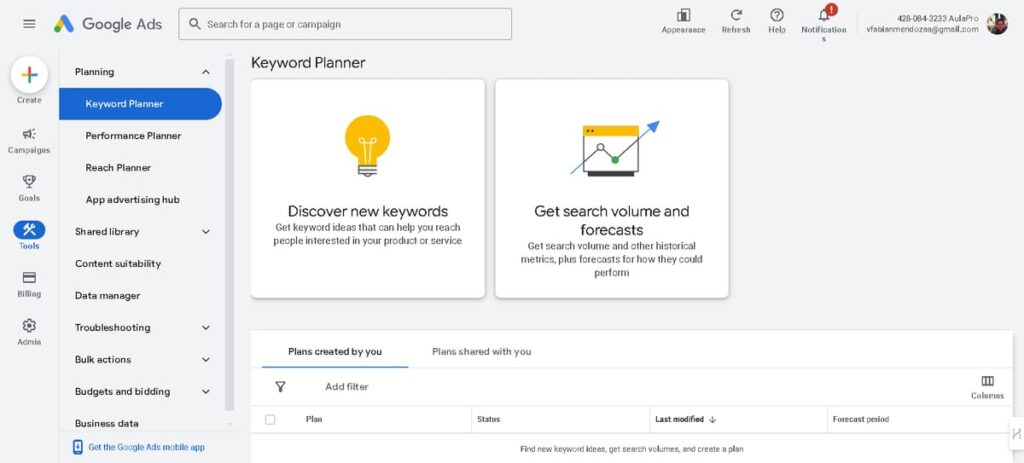
Tools for Local Keyword Research
- Google Keyword Planner: This free tool from Google allows you to find keyword ideas and see how they might perform. You can enter terms related to your business and location to get suggestions for local keywords.
- Ahrefs: Ahrefs provides comprehensive keyword data, including search volume, keyword difficulty, and related keywords. It also offers a feature to find keywords that your competitors are ranking for.
- SEMrush: SEMrush is another powerful tool for keyword research, offering insights into search volume, competition, and keyword trends. It also provides local SEO data to help you target your specific area.
- Moz Local: Moz Local helps you manage your local listings and ensure your business information is accurate across the web. It also provides keyword research tools tailored for local SEO.
- Ubersuggest: Ubersuggest offers keyword suggestions, search volume data, and SEO difficulty scores. It’s a user-friendly tool for finding local keywords.
Steps to Conduct Local Keyword Research
- Brainstorm Local Keywords: Start by brainstorming a list of potential keywords related to your business and location. Think about the terms your customers might use to find your products or services in Orlando.
- Use Keyword Research Tools: Enter your brainstormed keywords into the tools mentioned above to get more keyword ideas and data. Look for keywords with high search volume and low to medium competition.
- Analyze Competitors: Check the keywords that your local competitors are ranking for. Tools like Ahrefs and SEMrush can help you identify these keywords. This can give you insights into what works well in your local market.
- Focus on Long-Tail Keywords: Long-tail keywords are longer and more specific phrases, such as “best vegan bakery in Orlando” or “affordable Orlando wedding photographers.” These keywords often have less competition and can attract more targeted traffic.
- Consider User Intent: Think about the intent behind each keyword. Are users looking for information, trying to make a purchase, or seeking a specific service? Understanding user intent can help you choose the most relevant keywords for your content.
- Localize Your Keywords: Make sure to include location-specific terms in your keywords. For example, instead of just using “bakery,” use “Orlando bakery” or “bakery in Orlando.” This helps search engines understand that your business is relevant to local searches.
- Evaluate Keyword Performance: Use tools like Google Analytics and Google Search Console to track the performance of your chosen keywords. Monitor metrics such as search rankings, organic traffic, and conversion rates to see which keywords are driving the best results.
Examples of Local Keywords for Different Industries
- Restaurants: “best restaurants in Orlando,” “Orlando seafood restaurant,” “downtown Orlando dining”
- Retail: “Orlando clothing stores,” “boutiques in Orlando,” “Orlando shoe store”
- Healthcare: “Orlando dentist,” “best pediatrician in Orlando,” “Orlando urgent care”
- Real Estate: “Orlando homes for sale,” “real estate agents in Orlando,” “downtown Orlando apartments”
- Services: “Orlando wedding photographer,” “Orlando plumbing services,” “best salons in Orlando”
By following these strategies and using the right tools, you can conduct effective local keyword research that will help your business improve its local SEO, attract more targeted traffic, and ultimately drive more customers to your website.
Optimizing On-Page SEO
Optimizing on-page SEO is essential for improving your website’s search engine visibility. This section will cover best practices for optimizing various on-page elements such as title tags, meta descriptions, headers, and images with local keywords to enhance your local SEO efforts.
Title Tags
Title tags are one of the most important on-page SEO elements. They tell search engines and users what your page is about. To optimize title tags:
- Include Local Keywords: Incorporate relevant local keywords to target your specific audience. For example, “Best Bakery in Orlando | Fresh Bread & Pastries.”
- Keep It Concise: Ensure your title tag is between 50-60 characters to avoid truncation in search results.
- Unique Titles for Each Page: Create unique and descriptive titles for each page to avoid duplication issues and clearly define the content of each page.
Meta Descriptions
Meta descriptions provide a summary of your page’s content and appear below the title tag in search results. To optimize meta descriptions:
- Incorporate Local Keywords: Use local keywords to attract local search traffic. For example, “Visit our bakery in Orlando for the freshest bread and pastries.”
- Compelling and Informative: Write compelling descriptions that encourage users to click on your link. Include a call-to-action (CTA) when appropriate.
- Keep It Within 150-160 Characters: Ensure your meta description is concise and within the recommended character limit to avoid truncation.
Headers (H1, H2, H3, etc.)
Headers (H1, H2, H3, etc.) help structure your content and make it easier for search engines and users to understand. To optimize headers:
- Use Local Keywords: Include local keywords in your headers to signal the relevance of your content to local searches. For example, “Top Reasons to Visit Our Orlando Bakery” (H2).
- Hierarchical Structure: Use headers in a hierarchical manner (H1 for main titles, H2 for subheadings, H3 for sub-subheadings) to create a clear and organized structure.
- Descriptive and Relevant: Make sure your headers accurately describe the content of each section.
Image Optimization
Images can enhance user experience and improve SEO when optimized correctly. To optimize images:
- Use Descriptive File Names: Rename image files to include relevant local keywords before uploading them to your website. For example, “orlando-bakery-bread.jpg.”
- Alt Text: Add descriptive alt text to each image, including local keywords where appropriate. Alt text helps search engines understand the content of the image and improves accessibility.
- Image Compression: Compress images to reduce file size and improve page load times without sacrificing quality. Tools like TinyPNG or ImageOptim can help.
URL Structure
URLs should be clean, descriptive, and include relevant keywords. To optimize URL structure:
- Include Local Keywords: Incorporate local keywords in your URLs to improve relevance. For example, “https://www.example.com/orlando-bakery.”
- Short and Descriptive: Keep URLs concise and descriptive, making it clear what the page is about.
- Hyphens for Separation: Use hyphens to separate words in URLs for better readability and SEO. Avoid using underscores or spaces.
Internal Linking
Internal linking helps distribute page authority and improves the crawlability of your website. To optimize internal linking:
- Use Descriptive Anchor Text: When linking to other pages on your site, use descriptive anchor text that includes relevant keywords. For example, “Learn more about our bakery in Orlando.”
- Link to Relevant Pages: Ensure that internal links point to relevant pages that provide additional value to users.
- Natural Linking: Add internal links naturally within your content to avoid keyword stuffing and maintain a good user experience.
Content Optimization
Content is the core of on-page SEO. To optimize your content:
- High-Quality Content: Create high-quality, informative, and engaging content that addresses the needs and interests of your local audience.
- Local Keywords: Naturally incorporate local keywords throughout your content, including in the first 100 words, headings, and body text.
- User Intent: Focus on addressing user intent by providing relevant information that answers their queries and solves their problems.
Mobile Optimization
With the increasing use of mobile devices, optimizing your site for mobile is crucial. To ensure mobile optimization:
- Responsive Design: Use a responsive design that adapts to different screen sizes and devices.
- Fast Loading Times: Optimize your site’s speed for mobile users by compressing images, minimizing code, and leveraging browser caching.
- Mobile-Friendly Navigation: Ensure that your site’s navigation is easy to use on mobile devices, with clear menus and clickable elements.
By following these best practices for on-page SEO, you can improve your website’s search engine visibility, attract more local traffic, and provide a better user experience. Regularly review and update your on-page SEO elements to stay ahead of the competition and maintain optimal performance.
Creating Localized Content
Creating content that resonates with your local audience in Orlando is key to improving your local SEO and engaging potential customers. This section provides tips for developing localized content, including blog posts, local guides, event announcements, and how-to articles that incorporate local keywords and context.
Understand Your Local Audience
Before creating localized content, it’s essential to understand the preferences, interests, and needs of your local audience in Orlando. Conducting market research, analyzing customer feedback, and using tools like Google Analytics can help you gain insights into your audience’s behavior and preferences.
Blog Posts
Blog posts are a great way to engage your local audience and improve your SEO. Here are some tips for creating localized blog posts:
- Local Keywords: Use local keywords in your blog titles, headings, and throughout the content. For example, “Top 10 Cafes to Visit in Orlando” or “Orlando’s Best Outdoor Activities.”
- Local Events and News: Write about local events, news, and happenings in Orlando. This can include coverage of local festivals, community events, or news relevant to your industry.
- Local Stories and Interviews: Feature stories or interviews with local personalities, businesses, or customers. This helps create a sense of community and relevance.
Local Guides
Local guides are valuable resources that can attract local search traffic and establish your business as a helpful local authority. Here are some ideas for creating local guides:
- Best of Orlando: Create guides that highlight the best places to eat, shop, or visit in Orlando. For example, “The Ultimate Guide to Orlando’s Best Restaurants” or “Top Tourist Attractions in Orlando.”
- Neighborhood Guides: Develop guides focused on specific neighborhoods in Orlando, detailing the best places to visit, local services, and community features.
- Visitor Information: Provide practical information for visitors, such as transportation options, accommodation recommendations, and tips for getting around Orlando.
Event Announcements
Event announcements help keep your audience informed about upcoming local events and can drive traffic to your site. Here’s how to create effective event announcements:
- Local Event Listings: Maintain a regularly updated list of local events relevant to your industry or audience. This can include community events, industry conferences, or local festivals.
- Event Pages: Create dedicated pages for specific events, providing detailed information about the event, including dates, locations, and how to participate.
- Promotional Content: Write blog posts or social media updates promoting local events you are hosting or participating in. Include local keywords and event-specific details.
How-To Articles
How-to articles are practical pieces of content that can attract local traffic by addressing specific needs and questions. Here are some tips for creating localized how-to articles:
- Local Context: Incorporate local context into your how-to articles. For example, “How to Start a Small Business in Orlando” or “Tips for Gardening in Orlando’s Climate.”
- Step-by-Step Guides: Provide clear, step-by-step instructions that are easy to follow. Use images, videos, or infographics to enhance the content.
- Local Resources: Mention local resources, such as businesses, organizations, or community services that can help with the topic. For example, “Where to Find Organic Gardening Supplies in Orlando.”
Use Local Language and References
Using local language, slang, and references can make your content more relatable to your Orlando audience. Mentioning local landmarks, neighborhoods, and cultural references helps create a connection with your readers.
Incorporate User-Generated Content
Encourage your local customers to contribute content, such as reviews, testimonials, or photos. User-generated content can enhance your credibility and provide valuable social proof.
Leverage Social Media
Promote your localized content on social media platforms to reach a broader local audience. Engage with local groups, use local hashtags, and participate in community discussions to increase your visibility.
Monitor and Analyze Performance
Use tools like Google Analytics and social media insights to monitor the performance of your localized content. Analyze metrics such as page views, engagement, and conversions to understand what works best and refine your content strategy accordingly.
By following these tips, you can create localized content that resonates with your Orlando audience, improves your local SEO, and drives more targeted traffic to your website.
Building Local Backlinks
Acquiring high-quality local backlinks is crucial for improving your local SEO and enhancing your website’s authority. This section will cover strategies for building local backlinks, including partnerships with local businesses, guest blogging on Orlando-based websites, and participating in local events and sponsorships.
Why Local Backlinks Matter
Local backlinks signal to search engines that your website is relevant to a specific geographical area, helping improve your rankings in local search results. High-quality local backlinks from reputable sources also boost your website’s overall authority and trustworthiness.
Strategies for Acquiring Local Backlinks
- Partner with Local BusinessesBuilding relationships with other local businesses can be a valuable source of backlinks. Here are some ways to establish partnerships:
- Mutual Promotions: Collaborate with complementary businesses to promote each other’s products or services. For example, a local bakery might partner with a coffee shop to cross-promote.
- Local Business Directories: Ensure your business is listed in local business directories like Yelp, Yellow Pages, and the Orlando Chamber of Commerce directory.
- Supplier and Vendor Links: Ask your suppliers, vendors, or business partners to link to your website from their “partners” or “clients” pages.
- Guest Blogging on Orlando-Based WebsitesWriting guest posts for local blogs and websites is an effective way to earn backlinks while showcasing your expertise. Here’s how to do it:
- Identify Local Blogs: Find popular blogs or websites in Orlando that accept guest contributions. Look for sites that are relevant to your industry.
- Pitch Relevant Topics: Pitch topics that are relevant to both the blog’s audience and your business. Ensure that your content is valuable and engaging.
- Include a Backlink: Within your guest post, include a backlink to your website. Typically, this is done in the author bio or within the content where it naturally fits.
- Participate in Local Events and SponsorshipsParticipating in local events and sponsorships can help you gain visibility and backlinks from event websites. Here’s how:
- Event Participation: Participate in local trade shows, community events, and industry conferences. Event organizers often list participants on their websites with backlinks.
- Event Sponsorships: Sponsor local events or charities. Sponsors are usually featured on the event’s website with a link back to their site.
- Host Local Events: Host your own events, such as workshops, seminars, or community gatherings. Create an event page on your website and encourage attendees and partners to link to it.
- Engage with Local MediaLocal newspapers, magazines, and online publications are excellent sources of high-quality backlinks. Here are some ways to engage with local media:
- Press Releases: Send press releases to local media outlets about newsworthy events, product launches, or company milestones.
- Media Coverage: Reach out to local journalists and offer to be a source for stories related to your industry.
- Feature Articles: Pitch feature articles or op-eds to local publications that highlight your expertise or unique aspects of your business.
- Utilize Local Community Websites and ForumsEngaging with local community websites and forums can help you build relationships and earn backlinks. Here’s how:
- Local Forums and Community Boards: Participate in discussions on local forums and community boards. Provide valuable insights and link back to your website when relevant.
- Neighborhood Groups: Join neighborhood groups on platforms like Nextdoor or Facebook. Share helpful content and links to your website.
- Local Resource Pages: Identify local resource pages or “best of” lists and request to be included if your business is relevant.
- Create Local ContentCreating content that specifically targets local audiences can naturally attract backlinks from local sources. Here are some ideas:
- Local Guides: Publish comprehensive guides about Orlando, such as “Best Restaurants in Orlando” or “Top Tourist Attractions in Orlando.”
- Case Studies and Success Stories: Share case studies or success stories involving local clients or customers.
- Local Interviews: Interview local influencers, business owners, or community leaders and publish the interviews on your blog.
- Collaborate with Local InfluencersPartnering with local influencers can help you reach a wider audience and earn backlinks. Here’s how:
- Influencer Outreach: Identify local influencers who align with your brand and reach out to them for collaborations.
- Product Reviews and Features: Offer your products or services for review and request a backlink in return.
- Sponsored Content: Work with influencers to create sponsored content that includes links to your website.
By implementing these strategies, you can build high-quality local backlinks that enhance your website’s authority and improve your local SEO. Building local backlinks requires ongoing effort and relationship-building, but the benefits in terms of increased visibility and traffic are well worth it.
Leveraging Google My Business
Optimizing your Google My Business (GMB) profile is a critical component of local SEO. A well-optimized GMB profile can enhance your visibility in local search results, attract more customers, and improve your online reputation. This section provides in-depth guidance on how to optimize your GMB profile, handle reviews, post updates, and use GMB features like Q&A and photos to boost your local SEO.

An optimized Google My Business profile for a local business in Orlando, showcasing key elements that enhance visibility and attract customers.
Setting Up and Verifying Your GMB Profile
- Claim Your Business
- Visit the Google My Business website.
- Sign in with your Google account and search for your business.
- If your business is listed, claim it. If not, add your business information.
- Verify Your Business
- Google will send a verification code to your business address via postcard.
- Enter the verification code in your GMB account to verify your business.
Optimizing Your GMB Profile
- Complete Your Profile
- Fill out all the information fields in your GMB profile, including business name, address, phone number, website, and hours of operation.
- Ensure that your business information is accurate and consistent with your website and other online listings.
- Select the Right Categories
- Choose the most relevant primary category for your business.
- Add secondary categories to describe other services you offer.
- Write a Compelling Business Description
- Use your business description to highlight what makes your business unique.
- Include relevant local keywords naturally in your description.
- Add Photos and Videos
- Upload high-quality photos of your business, products, services, and team.
- Add videos to showcase your business in action.
- Regularly update your photo gallery to keep it fresh.
Managing Reviews
- Encourage Customer Reviews
- Ask satisfied customers to leave reviews on your GMB profile.
- Provide excellent customer service to increase the likelihood of positive reviews.
- Respond to Reviews
- Respond to all reviews, both positive and negative, in a timely and professional manner.
- Thank customers for positive reviews and address any concerns raised in negative reviews.
- Monitor and Analyze Reviews
- Regularly monitor your reviews to understand customer sentiment.
- Use feedback from reviews to improve your products, services, and customer experience.
Posting Updates
- Create Regular Posts
- Use the GMB “Posts” feature to share updates, promotions, events, and news.
- Regular posts can keep your audience engaged and informed.
- Types of Posts
- What’s New: Share general updates and news.
- Events: Promote upcoming events with dates and details.
- Offers: Highlight special promotions or discounts.
- Products: Feature new or popular products.
- Use High-Quality Images
- Include high-quality images in your posts to attract attention.
- Include Call-to-Actions (CTAs)
- Add CTAs like “Call Now,” “Learn More,” “Sign Up,” or “Buy” to encourage customer engagement.
Utilizing GMB Features
- Q&A (Questions and Answers)
- Monitor the Q&A section of your GMB profile regularly.
- Provide prompt and accurate answers to customer questions.
- Add common questions and answers proactively to help potential customers.
- Attributes
- Add relevant attributes to your GMB profile, such as “Women-led,” “LGBTQ+ friendly,” “Outdoor seating,” etc.
- Attributes provide additional information to customers and help your business stand out.
- Services and Products
- List your products and services with detailed descriptions and prices.
- Use high-quality images for each product or service.
- Bookings
- If applicable, enable booking functionality to allow customers to schedule appointments directly through your GMB profile.
Monitoring Performance
- Insights
- Use the GMB Insights feature to track how customers find your listing, where they come from, and what actions they take.
- Analyze metrics such as search views, map views, website visits, calls, and direction requests.
- Adjust Your Strategy
- Based on the insights data, adjust your GMB strategy to improve performance.
- Focus on areas that need improvement, such as increasing reviews, enhancing engagement, or updating information.
By leveraging Google My Business effectively, you can significantly boost your local SEO, attract more customers, and enhance your online presence. Regularly update and optimize your GMB profile to stay ahead of the competition and provide the best possible experience for your customers.
Using Social Media for Local Engagement
Social media platforms offer powerful tools for connecting with your local community, promoting your business, and driving traffic to your website. This section covers effective strategies for using social media to engage with your local audience, including platform-specific tips and engagement techniques.
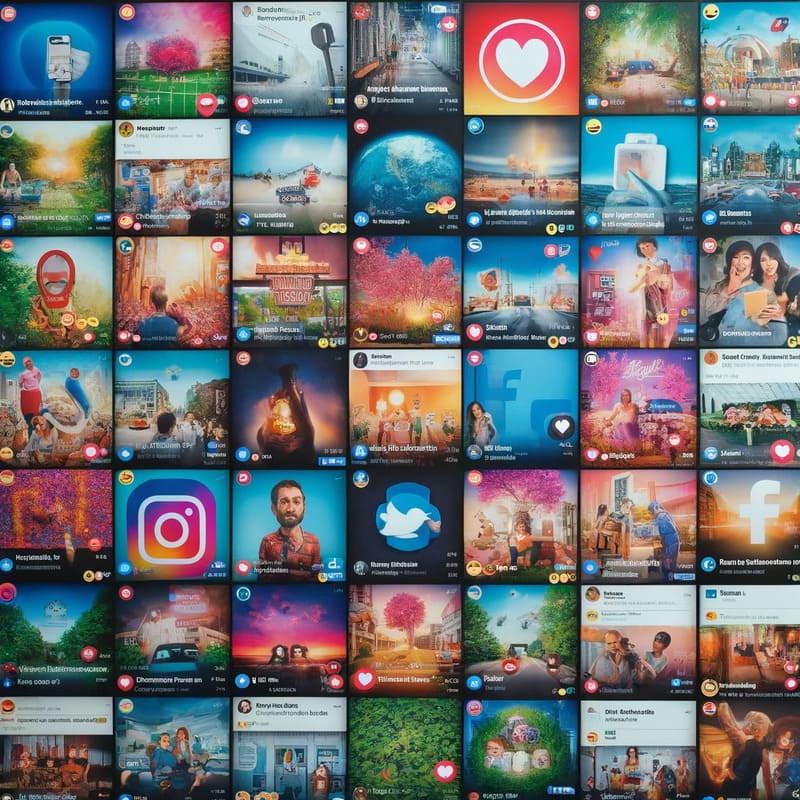
General Strategies for Social Media Engagement
- Know Your Audience
- Understand the demographics, interests, and behaviors of your local audience.
- Use social media analytics tools to gain insights into your audience’s preferences and engagement patterns.
- Be Consistent
- Post regularly and maintain a consistent presence on social media platforms.
- Develop a content calendar to plan and schedule your posts in advance.
- Engage Actively
- Respond to comments, messages, and mentions promptly.
- Engage with your audience by liking, sharing, and commenting on their posts.
- Use Local Keywords and Hashtags
- Incorporate local keywords and hashtags in your posts to increase visibility in local searches.
- Use hashtags like #OrlandoBusiness, #OrlandoEvents, or #OrlandoCommunity to connect with the local audience.
- Share Local Content
- Share content that is relevant to your local community, such as news, events, and stories.
- Highlight local partnerships, collaborations, and customer testimonials.
Platform-Specific Tips
- Create a Business Page
- Set up a dedicated business page for your company.
- Complete all profile information, including address, contact details, and business hours.
- Use Facebook Events
- Create and promote local events through Facebook Events.
- Encourage attendees to RSVP and share the event with their friends.
- Join Local Groups
- Join local community groups and participate in discussions.
- Share relevant content and engage with group members to increase visibility.
- Leverage Facebook Ads
- Use Facebook Ads to target local audiences with precision.
- Create ads that promote special offers, events, or new products and services.
- Optimize Your Profile
- Use a clear profile picture, write a compelling bio, and include your business location.
- Add a link to your website or a specific landing page in your bio.
- Use Instagram Stories
- Share behind-the-scenes content, daily updates, and promotions through Instagram Stories.
- Use location tags, hashtags, and interactive stickers to increase engagement.
- Collaborate with Local Influencers
- Partner with local influencers to reach a broader audience.
- Host Instagram takeovers, giveaways, or product reviews with influencers.
- Engage with Local Content
- Follow and engage with local businesses, influencers, and customers.
- Comment on and share posts from local accounts to build relationships.
- Tweet Regularly
- Post regular updates, news, and promotions on Twitter.
- Use local hashtags and mentions to increase visibility.
- Participate in Local Conversations
- Engage in local Twitter chats and discussions.
- Respond to tweets from local businesses and customers.
- Share Real-Time Updates
- Use Twitter to share real-time updates about events, promotions, and news.
- Tweet live from local events to increase engagement.
- Use Twitter Ads
- Run targeted Twitter Ads to reach local audiences.
- Promote tweets that highlight special offers, events, or announcements.
- Optimize Your Company Page
- Complete your LinkedIn company page with all relevant information.
- Post regular updates and share industry-related content.
- Join Local LinkedIn Groups
- Join and participate in local professional groups and communities.
- Share valuable insights and engage in discussions to build your network.
- Share Local News and Events
- Post updates about local industry news, events, and achievements.
- Highlight local partnerships and collaborations.
- Leverage LinkedIn Ads
- Use LinkedIn Ads to target local professionals and businesses.
- Promote job openings, events, and company updates.
- Create Local Boards
- Set up boards that focus on local interests, such as “Orlando Events” or “Orlando Dining.”
- Pin content that highlights local attractions, events, and businesses.
- Use Rich Pins
- Utilize Rich Pins to provide more context about your products, recipes, or articles.
- Ensure your pins include local keywords and relevant descriptions.
- Collaborate with Local Pinners
- Partner with local Pinterest users to create shared boards and collaborate on content.
- Engage with local influencers and businesses by repinning their content.
- Promote Pins Locally
- Use Pinterest Ads to target local audiences.
- Create promoted pins that highlight local events, products, or services.
Engagement Strategies
- Host Contests and Giveaways
- Run local contests and giveaways to increase engagement and attract new followers.
- Encourage participants to share your content and use specific hashtags.
- Feature Local Customers and Stories
- Highlight local customers, success stories, and testimonials.
- Share user-generated content to build a sense of community.
- Create Interactive Content
- Use polls, quizzes, and interactive posts to engage your audience.
- Encourage followers to share their opinions and experiences.
- Utilize Live Streaming
- Host live streams to interact with your audience in real time.
- Stream local events, behind-the-scenes content, or Q&A sessions.
By leveraging social media platforms effectively, you can connect with your local community, promote your business, and drive traffic to your website. Tailor your strategies to each platform and engage actively with your audience to build strong local relationships and enhance your online presence.
Measuring and Analyzing SEO Performance
Tracking and analyzing your SEO performance is essential to understand the effectiveness of your strategies and make informed adjustments. This section covers the tools and techniques for measuring your SEO success, including setting up and interpreting data from Google Analytics and Google Search Console, and tips for refining your strategies based on performance data.
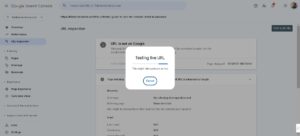
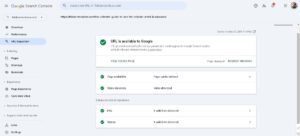
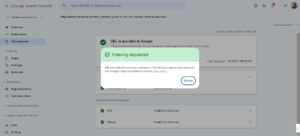
A common indexing process in Google Search Console, typically used to submit new content to Google or update changes to existing content.
Key Tools for Measuring SEO Performance
- Google Analytics
- Google Analytics is a powerful tool that provides detailed insights into your website’s traffic and user behavior.
- Setting Up Google Analytics: Create a Google Analytics account, add your website as a property, and install the tracking code on your website.
- Google Search Console
- Google Search Console helps you monitor and maintain your site’s presence in Google search results.
- Setting Up Google Search Console: Verify your website ownership by adding a verification code to your site or using alternative methods like DNS verification.
- Other Useful Tools
- Ahrefs: Provides comprehensive data on backlinks, keywords, and site performance.
- SEMrush: Offers insights into organic traffic, keyword rankings, and competitive analysis.
- Moz: Helps with tracking keyword rankings, site audits, and link analysis.
Key Metrics to Track
- Organic Traffic
- Measure the number of visitors coming to your website through organic search results.
- Track organic traffic trends over time to assess the impact of your SEO efforts.
- Keyword Rankings
- Monitor your website’s rankings for target keywords.
- Use tools like Ahrefs, SEMrush, or Moz to track keyword performance and identify opportunities for improvement.
- Click-Through Rate (CTR)
- Analyze the percentage of users who click on your website link in the search results.
- Improve your CTR by optimizing title tags and meta descriptions.
- Bounce Rate
- Measure the percentage of visitors who leave your site after viewing only one page.
- A high bounce rate may indicate issues with page content or user experience.
- Conversion Rate
- Track the percentage of visitors who complete a desired action (e.g., making a purchase, filling out a form).
- Optimize your conversion rate by improving landing page content and user experience.
- Backlinks
- Monitor the number and quality of backlinks to your site.
- Use tools like Ahrefs or Moz to analyze your backlink profile and identify new link-building opportunities.
- Page Load Speed
- Measure the time it takes for your web pages to load.
- Use Google PageSpeed Insights to analyze and improve page load times.
- User Engagement
- Track metrics such as average session duration, pages per session, and user interactions.
- Analyze user engagement to understand how visitors interact with your content.
Setting Up and Using Google Analytics
- Create a Google Analytics Account
- Sign up for a free account at Google Analytics.
- Set up a property for your website and get the tracking code.
- Install the Tracking Code
- Add the tracking code to your website’s HTML, or use a tag management system like Google Tag Manager.
- Set Up Goals
- Define and set up goals to track conversions and important actions on your site (e.g., form submissions, purchases).
- Navigate to Admin > View > Goals to create new goals.
- Analyze Reports
- Audience Overview: Understand your visitors’ demographics, interests, and behavior.
- Acquisition Reports: Track where your traffic comes from, including organic search, referrals, and social media.
- Behavior Reports: Analyze user interactions with your site, including page views, bounce rate, and site speed.
- Conversion Reports: Monitor goal completions and conversion rates.
Setting Up and Using Google Search Console
- Verify Your Website
- Sign in to Google Search Console.
- Add your website and choose a verification method to confirm ownership.
- Submit a Sitemap
- Submit your XML sitemap to help Google crawl and index your site more effectively.
- Navigate to Index > Sitemaps and enter your sitemap URL.
- Monitor Search Performance
- Performance Report: Analyze your site’s search performance, including clicks, impressions, CTR, and average position.
- Coverage Report: Check for indexing issues and ensure all your pages are indexed correctly.
- Enhancements Report: Monitor mobile usability, AMP status, and other enhancements.
- Fix Errors and Issues
- Address any crawl errors, security issues, or manual actions reported in Search Console.
- Use the URL Inspection tool to check the index status of specific pages.
Tips for Adjusting Strategies Based on Performance Data
- Identify Trends and Patterns
- Regularly review your performance data to identify trends and patterns.
- Look for changes in traffic, rankings, and user behavior.
- Focus on High-Impact Areas
- Prioritize efforts on high-impact areas, such as improving top-performing pages and addressing critical issues.
- Optimize pages with high impressions but low CTR to increase traffic.
- Conduct A/B Testing
- Test different elements of your site, such as headlines, images, and CTAs, to see what performs best.
- Use A/B testing tools to make data-driven decisions.
- Continuously Optimize Content
- Regularly update and optimize your content to keep it relevant and valuable.
- Use keyword performance data to refine your content strategy and target high-opportunity keywords.
- Stay Updated with SEO Best Practices
- Keep up with the latest SEO trends and algorithm updates.
- Continuously refine your strategies to stay ahead of the competition.
By measuring and analyzing your SEO performance using these tools and techniques, you can gain valuable insights into what’s working and what needs improvement. Regularly reviewing your data and making informed adjustments will help you achieve better results and drive more targeted traffic to your website.
Frequently Asked Questions (FAQs) about SEO in Orlando SMEs
How much does SEO cost for a small business?
The cost of SEO for a small business can vary widely depending on the scope of services and the provider’s expertise. On average, small businesses can expect to pay between $500 to $2,000 per month for ongoing SEO services. One-time projects and hourly consulting rates typically range from $100 to $300 per hour.
How do I SEO for a small business website?
To SEO a small business website, start by conducting keyword research to identify relevant local keywords. Optimize your on-page elements, including title tags, meta descriptions, headers, and images. Create high-quality, localized content, build local backlinks, and ensure your site is mobile-friendly. Regularly monitor your SEO performance using tools like Google Analytics and Google Search Console, and make adjustments as needed.
Is SEO worth it for small businesses?
Yes, SEO is worth it for small businesses. Effective SEO strategies can increase your website’s visibility in search results, drive targeted traffic, and improve conversion rates. Investing in SEO can lead to long-term benefits, including increased brand awareness, higher customer engagement, and sustained growth.
How much does it cost to hire an SEO company?
Hiring an SEO company can cost anywhere from $500 to $5,000 per month, depending on the complexity of your SEO needs and the company’s expertise. Some companies offer fixed-price packages, while others charge based on hourly rates or the scope of the project. It’s important to choose an SEO provider that aligns with your business goals and budget.
What are the key benefits of local SEO for small businesses in Orlando?
Local SEO helps small businesses in Orlando increase their visibility in local search results, attract more local customers, and compete effectively with larger businesses. It can drive more foot traffic to physical locations and enhance online engagement with the local community.
How long does it take to see results from SEO for small businesses?
SEO is a long-term investment, and it typically takes 3 to 6 months to see significant results. The timeframe can vary based on the competitiveness of the industry, the effectiveness of the SEO strategies implemented, and the consistency of SEO efforts.
Implementing these SEO strategies can significantly boost the online presence of Orlando’s small businesses. By optimizing your Google My Business profile, creating localized content, building local backlinks, and leveraging social media, you can improve your search rankings and attract more targeted traffic. Regularly measuring and analyzing your SEO performance will help you refine your strategies and stay ahead of the competition, ensuring sustained growth and success in the local market.
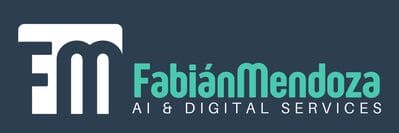

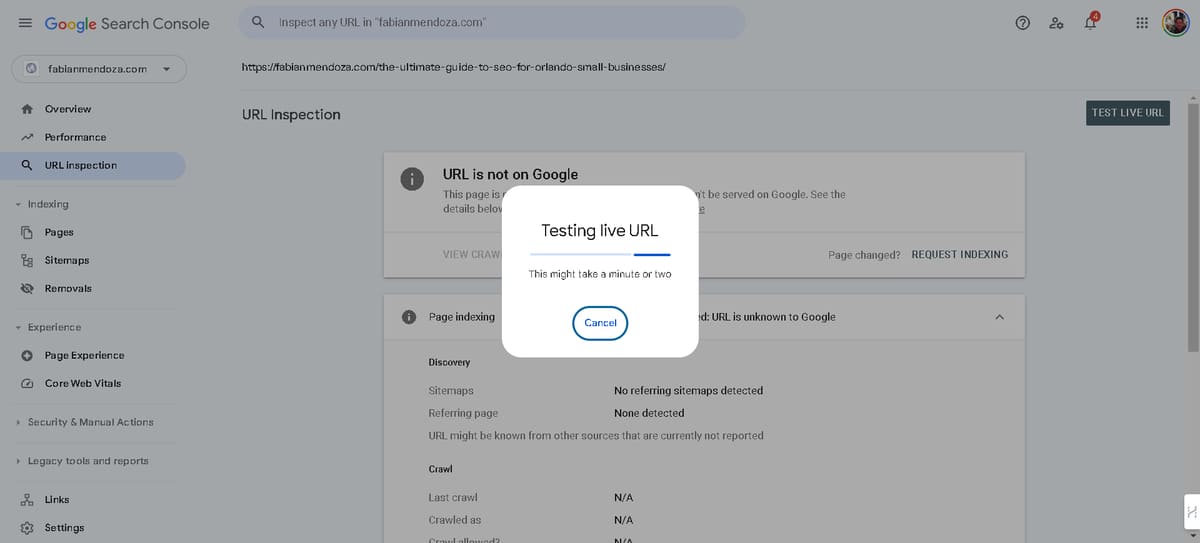
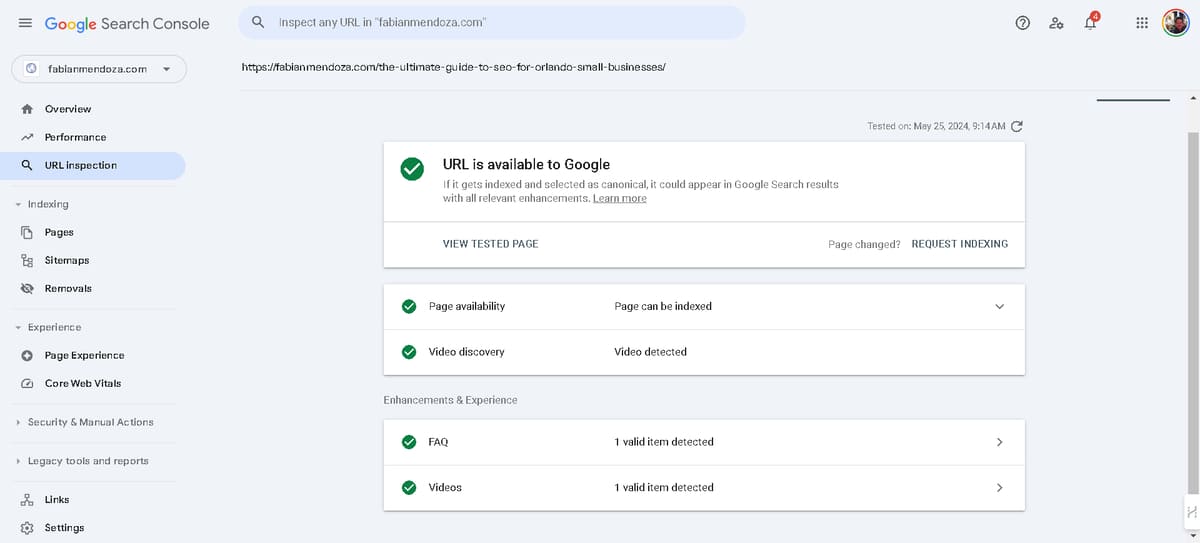
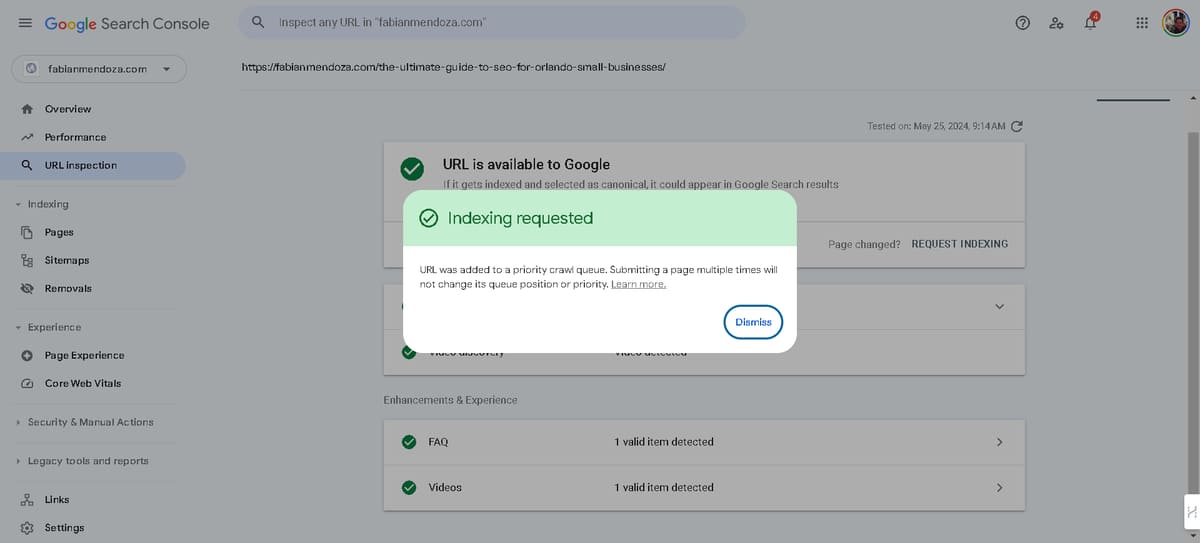
Leave a Reply